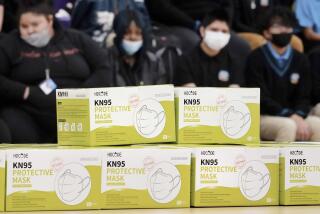Girls Seen More at Risk as AIDS Hits Adolescents
- Share via
BERLIN — The new face of AIDS is going to be a young face--and girls will be more at risk than boys--as the disease spreads unnoticed among adolescents in the United States and worldwide, several experts warned Saturday.
“Adolescents are the leading edge of the next wave of this epidemic,” said Dr. Karen Hein, director of the Montefiore Medical Center in New York, during a preview of data to be presented at this week’s International Conference on AIDS. “HIV is now well into the teen-age community and is spreading quickly and silently.”
Said Dr. Michael Merson, director of the World Health Organization’s Global Programme on AIDS: “The ultimate control of this epidemic is going to be to prevent new infections in young people who are sexually active.”
Worldwide, Merson estimated that 50% of those infected with the human immunodeficiency virus since the start of the epidemic--about 6.5 million people--have become infected while they were between ages 15 and 24.
In America, the numbers remain relatively small; Hein said there are currently 3,058 AIDS cases in the United States among young people between 15 and 24. But the growth is rapid; Hein said that figure represents a 77% increase from two years ago.
Hein termed young people the “invisible face” of the AIDS epidemic, and complained that while researchers have taken pains to examine trends among women and minorities, little attention has been paid to teens infected with HIV.
Meanwhile, a top official of the U.S. Centers for Disease Control cited statistics from 22 states that indicate teen-agers are being exposed to the virus at a rate much faster than previously believed, and that girls are most frequently the victims.
The data from 22 states that monitor HIV infection shows two reports of infection for every new AIDS case in the general population, Dr. James Curran, director of the CDC’s Office on AIDS, said. But among teens, there are 10 new infections for every one case of AIDS. Among boys, the ratio is 8 to 1. Among girls, Curran said, it is a startling 22 to 1.
Hein noted that, biologically, it is easier for a woman to become infected during heterosexual contact than it is for a man.
More to Read
Sign up for Essential California
The most important California stories and recommendations in your inbox every morning.
You may occasionally receive promotional content from the Los Angeles Times.










